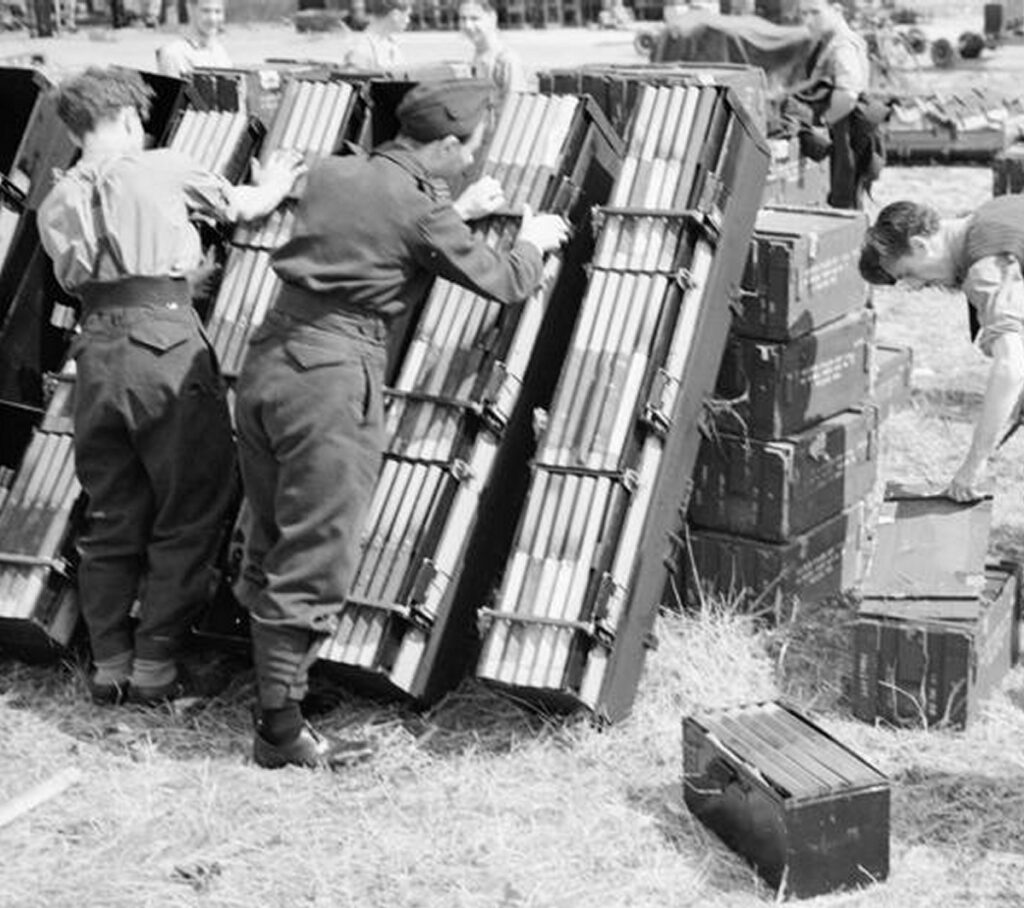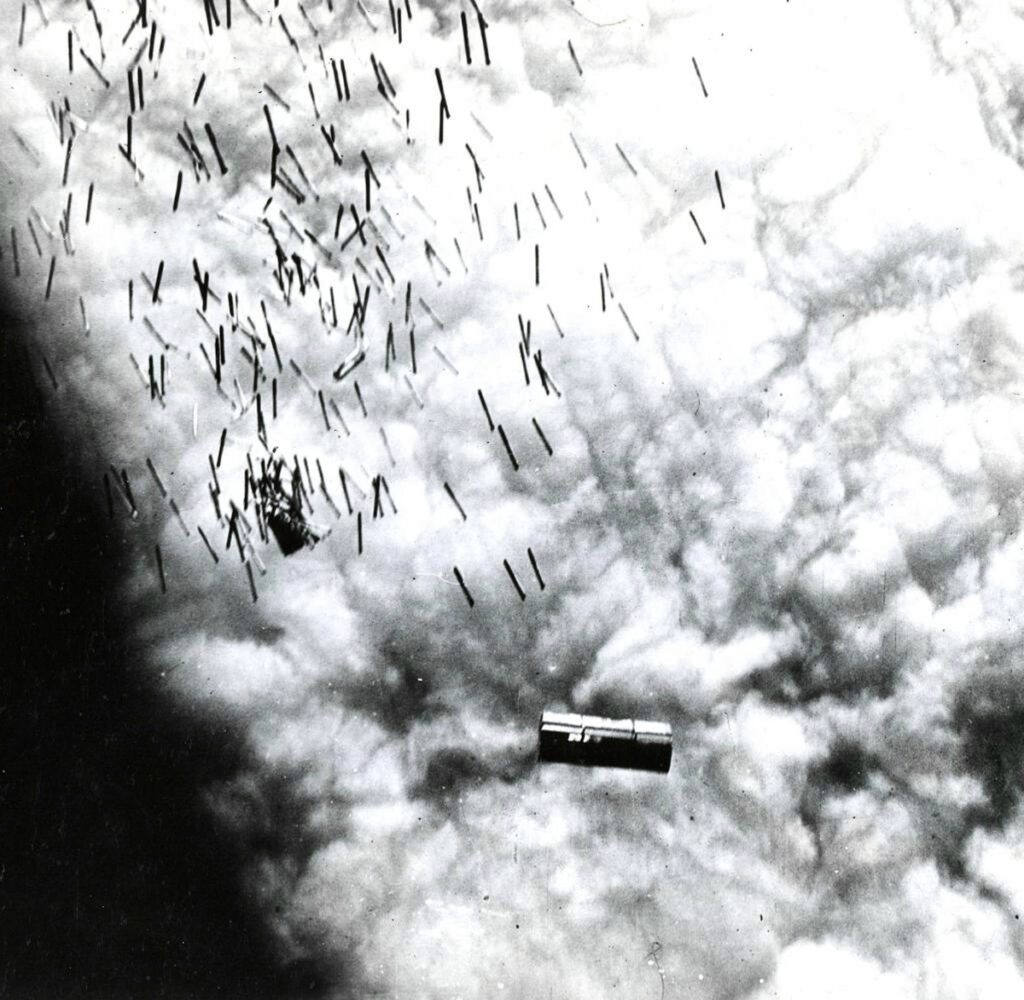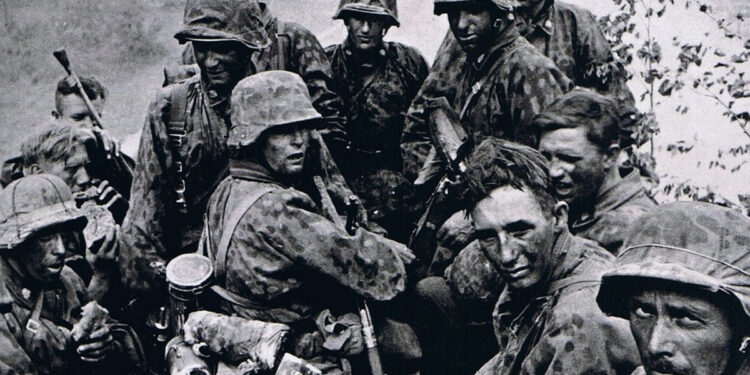By Michael Heidler
The increasing air superiority of the Allies and their area bombing had severely damaged the German armaments industry and transport routes during the WWII. In the last months of the war, the precarious supply of weapons and ammunition therefore necessitated a great deal of improvisation.

And in these difficult times everything available was used, as, for example, unexploded incendiary bombs that had been dropped by the Allies. The Forensic Institute of the Security Police (Kriminaltechnisches Institut der Sicherheitspolizei or KTI), a department of the Reich Security Main Office (“Reichssicherheitshauptamt” or RSHA), had experimented in early 1945 with converting Allied incendiary bombs into incendiary devices for ground combat. After all, the Allies dropped more than 80 million of them on German cities – with a correspondingly large number of duds. SS-Hauptsturmführer Professor Dr. Specht, an expert in arson investigation, and SS-Sturmbannführer Dr. Albert Widmann, who headed the D2 “Chemistry and Biology” department, were involved in the experiments.

The experiments were satisfactory and immediately aroused the interest of SS-Obersturmbannführer Otto Skorzeny. Skorzeny was generally very open to new weapons and maintained close contacts with the KTI. In February 1945, Dr. Widmann reported to the head of the Criminal Investigation Police Department (Reichskriminalpolizeiamt), SS-Oberführer Friedrich Panzinger, about the Elektrothermit incendiary devices. At the time, he said “3,000 incendiary bombs were being converted for Skorzeny, because they were much sought after by the SS-Jagdverbände. 500 of them could already be finished and shipped to Theresienstadt. With these incendiary devices, files can be destroyed in an emergency or tar-oil barrels, vehicles, buildings, or prepared fire barriers against tanks can be set on fire.”

According to Widmann, the Wehrwolf organization had also reported such a need. The conversion work was carried out by a KTI workshop.
To cover the demand, not only allied duds were collected. The declining German Luftwaffe hardly carried out any major bombing raids and large quantities of bombs therefore lay unused in German depots. As a U.S. report on captured ammunition shows, German 1 kg stick-type incendiary bombs had also been converted from larger ordnance.

From the incendiary bombs, the tail unit, the head fuse and the thermite filling were removed. The body was then filled with a pyrotechnic powder (magnesium and aluminum) and a detonator with a pull cord was installed. The detonator ignited a delay charge with about 100 seconds burning time. The filling then burned for about 3 to 4 minutes.
The Americans puzzled over the sense and purpose of the conversion. The heat development was too low to ignite fires. The original filling would have been better suited for this purpose. Therefore, a use for lighting or ground signaling seemed most likely. The report ends by stating that it was a forced measure with components that were just available, that it worked poorly, and that it was not well suited for fire or lighting purposes.













